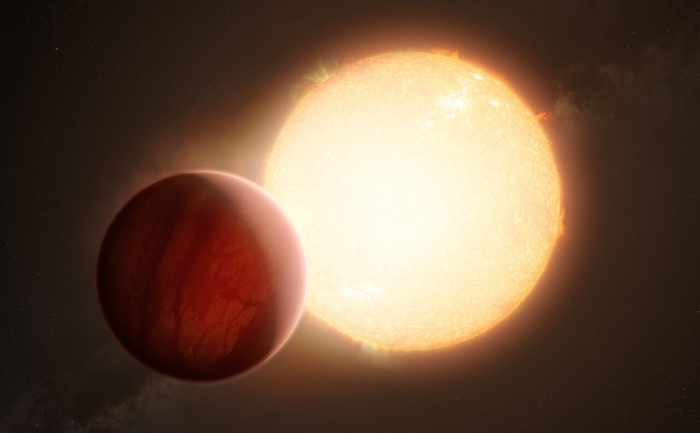Heaviest element ever found in exoplanet atmosphere by Very Large Telescope

Astronomers have found the heaviest element yet in the atmosphere of an exoplanet.
That element – barium – shocked scientists when it appeared in the atmospheres around two distant planets, WASP-76 b and WASP-121 b.
The discovery suggests that the atmospheres of such planets could be far more exotic and unusual than we had previously realised, and challenges our understanding of what the conditions on those distant worlds could be like.
WASP-76 b and WASP-121 b were already known to be extreme worlds, even among the planets outside of our solar system. They are known as “ultra-hot Jupiters” – similar in size to our near neighbour, but with temperatures that can go over 1000 degrees Celsius.
That is because they are so close to their star that a year lasts only a couple of days. And it means that conditions will be hellish: on WASP-76 b, it is thought to rain iron.
But barium is 2.5 times heavier than iron, and so would be expected to fall down into the lower layers of the atmosphere. Instead, it appears to be present high above the planet, researchers were shocked to find.
“This was in a way an ‘accidental’ discovery,” says Tomás Azevedo Silva, a PhD student at the University of Porto and the Instituto de Astrofísica e Ciências do Espaço (IA) in Portugal who led the new study. “We were not expecting or looking for barium in particular and had to cross-check that this was actually coming from the planet since it had never been seen in any exoplanet before.”
Scientists are still unclear how it could be hovering so high. But further research could shed light not only on where that barium has come from but also how atmospheres form on other planets, since the gaseous and hot nature of the planets mean their atmospheres can be more easily examined.
The new findings came from the Very Large Telescope, operating by the European SouthernObservatory, which is able to capture starlight as it filters through the planets’ atmosphere, and gives a clue to how they might look.
The new research is described in a paper, ‘Detection of Barium in the atmospheres of ultra-hot gas giants WASP-76b & WASP-121b’, published in Astronomy & Astrophysics.
Subscribe to Independent Premium to bookmark this article
Want to bookmark your favourite articles and stories to read or reference later? Start your Independent Premium subscription today.

Join our commenting forum
Join thought-provoking conversations, follow other Independent readers and see their replies